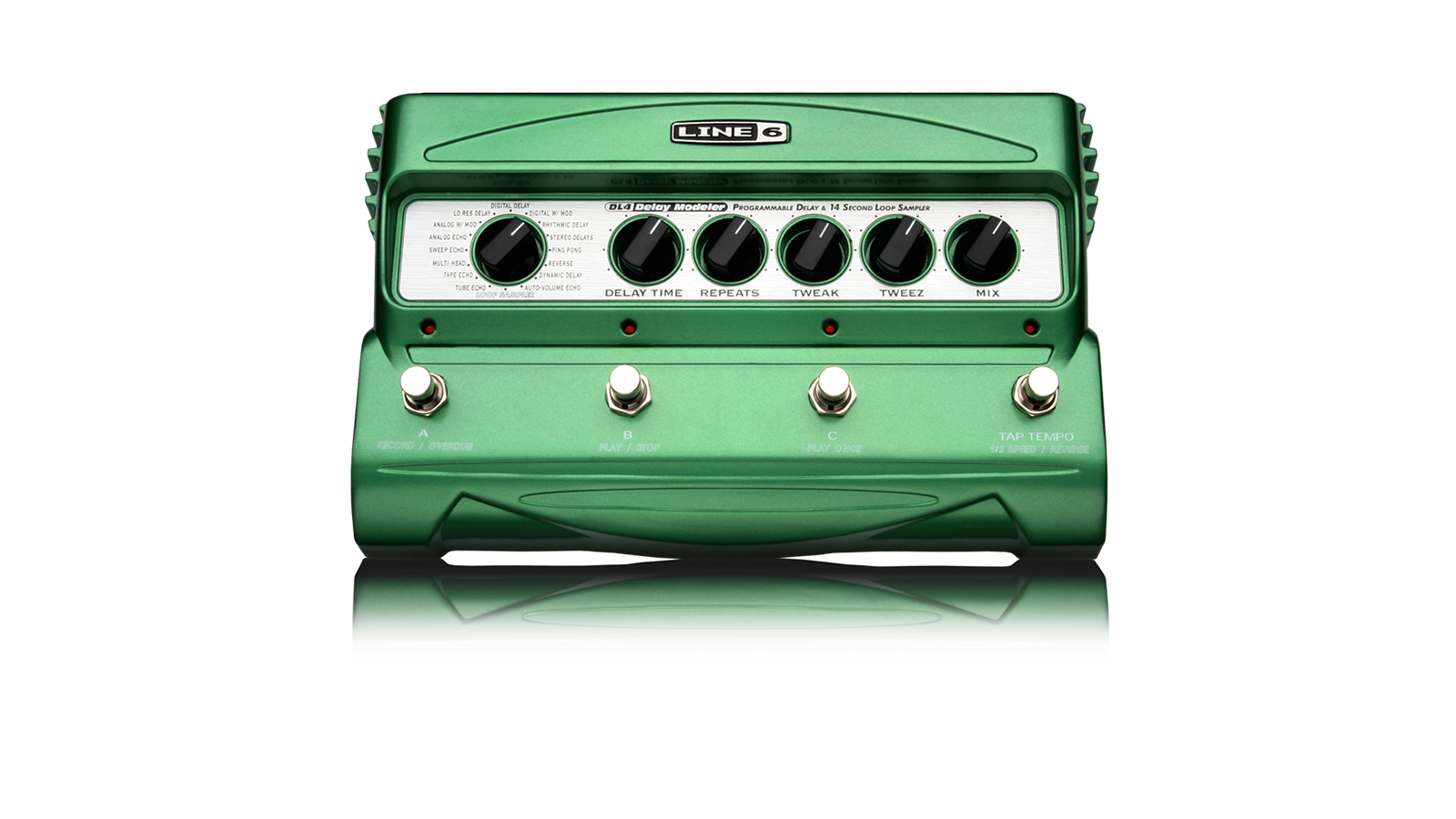How the Line 6 DL4 changed the game for digital modeling effects pedals
Produced continuously for 23 years, the classic four-stomp delay/looper enjoys status as a classic of the digital modeling era

Starting during the early years of the new millennium, the development of digital modeling products became the music industry equivalent of the nuclear arms race.
Only a few months after the latest and greatest new digital modeling product hit the market, a competing company would introduce something that offered a bigger selection of models with better detail and realism, faster processing and more memory, and often at a cheaper price, too.
As a result, most digital modeling products only lasted about a year or two before being discontinued as companies continuously developed upgrades to remain competitive.
The Line 6 DL4 Delay Modeler is one of only a few exceptions to this state of affairs. Introduced in 1999 along with the MM4 Modulation Modeler, the DL4 dates back to when digital modeling technology was still in its infancy.
While the MM4 was eventually discontinued, the DL4 has remained in continuous production until this year. However, the DL4 still lives on via the newly announced Line 6 DL4 MkII Delay Modeler, which provides all of the models and features of its predecessor plus a whole lot more.
The reasons Line 6’s Modeler pedals were so long-lived is mainly due to how the company was able to make digital modeling accessible to the masses both through ease of use and outstanding sound quality.
Jeorge Tripps, who left behind his acclaimed boutique pedal company Way Huge to join forces with Line 6, is largely responsible for the ergonomic design, employing uncomplicated switches, control knobs and footswitches that allowed guitarists to select models, adjust key parameters and access presets in the same simple manner as using a stompbox.
All the latest guitar news, interviews, lessons, reviews, deals and more, direct to your inbox!
The engineering team at Line 6 also had insightful understanding of the effects that guitarists desired most, and assembled an impressive collection of gear to analyze when developing the products’ models.

While all four of Line 6’s Modeler pedals far outlived most other digital modeling products, the DL4 has enjoyed timeless status for a variety of reasons.
First of all, it offers models of a true best-of selection of delay effects: the Maestro EP-1 and EP-3 Echoplex and Roland RE-101 Space Echo tape delays, Boss DM-2 and Electro-Harmonix Deluxe Memory Man analog delay pedals and the TC Electronic 2290.
Additionally, Line 6’s own models created for the DL4 like Sweep Echo, Lo-Res Delay, Reverse and Auto-Volume Echo have become classics in their own right.
The DL4 was also one of the first delay pedals to provide a built-in tap tempo function. The crowning touch was the addition of a looper pedal feature that offers up to 28 seconds of recording time and provides highly intuitive operation via the Record/Overdub, Play/Stop, Play Once and 1/2 Speed/Reverse footswitch functions.
The DL4’s affordability and ease of use instantly made it a hit with gigging and recording guitarists. Over the last 20 years, it’s become a commonly sighted fixture at club shows all over the world, often seen on stage with several different bands during the same night.
Its sound quality and expressive feel have earned it a devoted following amongst many of the world’s top performers even though they can afford the most expensive processors and the tech to operate them.
The DL4 has appeared in the rigs of literally hundreds of all-star players, including Matt Bellamy, Mike Campbell, Bill Frisell, Dave Grohl, Kirk Hammett and James Hetfield of Metallica, Adam Jones, Johnny Marr, Gary Moore, Ed O’Brien and Thom Yorke of Radiohead, Joe Perry, Joe Satriani and many more.

The DL4’s looper function has even played a major role in various styles of indie and experimental rock over the last few decades, used as a composition tool and performance instrument unto itself and inspiring artists like Battles, Minus the Bear and Reggie Watts.
Pitchfork, the hipster bible of indie rock music, published an article about the DL4’s role in modern music a few years ago, calling it “the most important guitar pedal of the last 20 years”.
In the Pitchfork article, Tyondai Braxton of Battles said, “I played that pedal more than I played any other instrument of the past 20 years. You start to incorporate how the pedal operates into how you work.”

Although many alternatives and imitators have appeared over the years, none of them managed to surpass the DL4’s success or render it obsolete.
The new DL4 MkII may be a replacement for the original that greatly expands its sounds and capabilities, but because the DNA of the original DL4 remains intact, it is also a continuation of a classic that will comfort its original fans who have always liked it just the way it has been since the beginning.
With a track record like that, it will probably be another two decades before the MkIII comes along.
Chris is the co-author of Eruption - Conversations with Eddie Van Halen. He is a 40-year music industry veteran who started at Boardwalk Entertainment (Joan Jett, Night Ranger) and Roland US before becoming a guitar journalist in 1991. He has interviewed more than 600 artists, written more than 1,400 product reviews and contributed to Jeff Beck’s Beck 01: Hot Rods and Rock & Roll and Eric Clapton’s Six String Stories.

